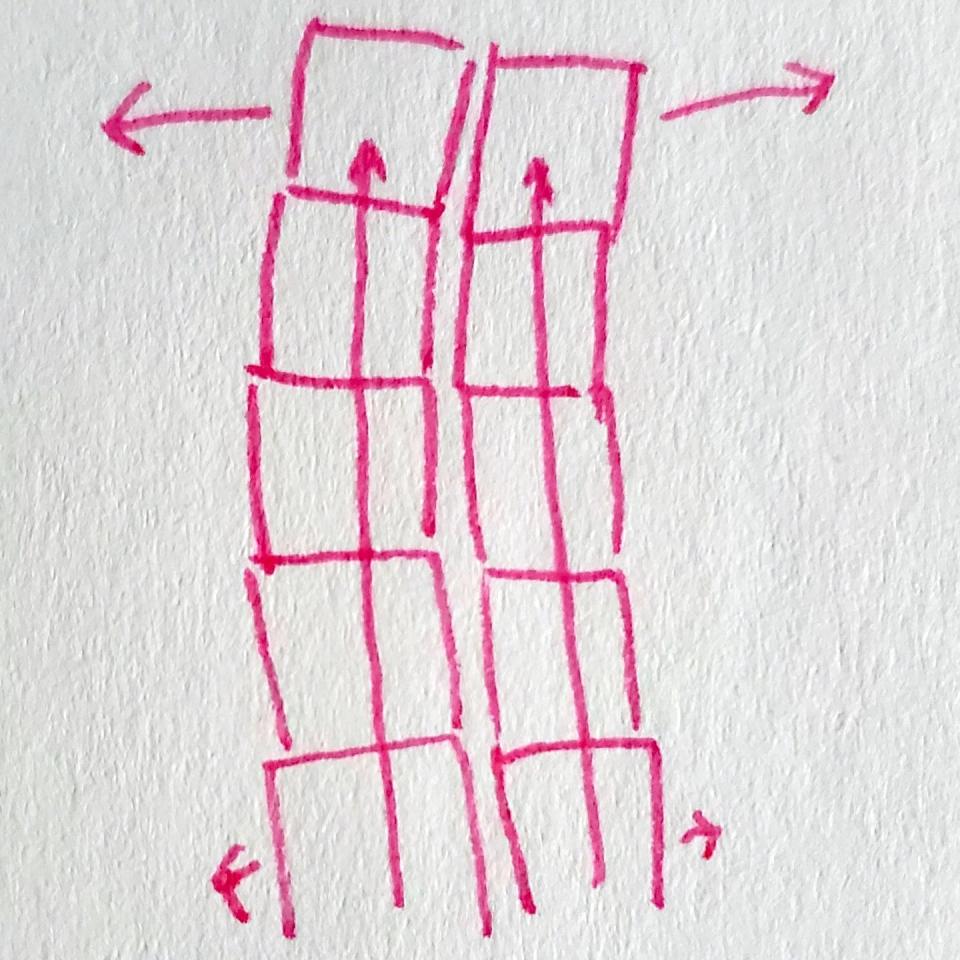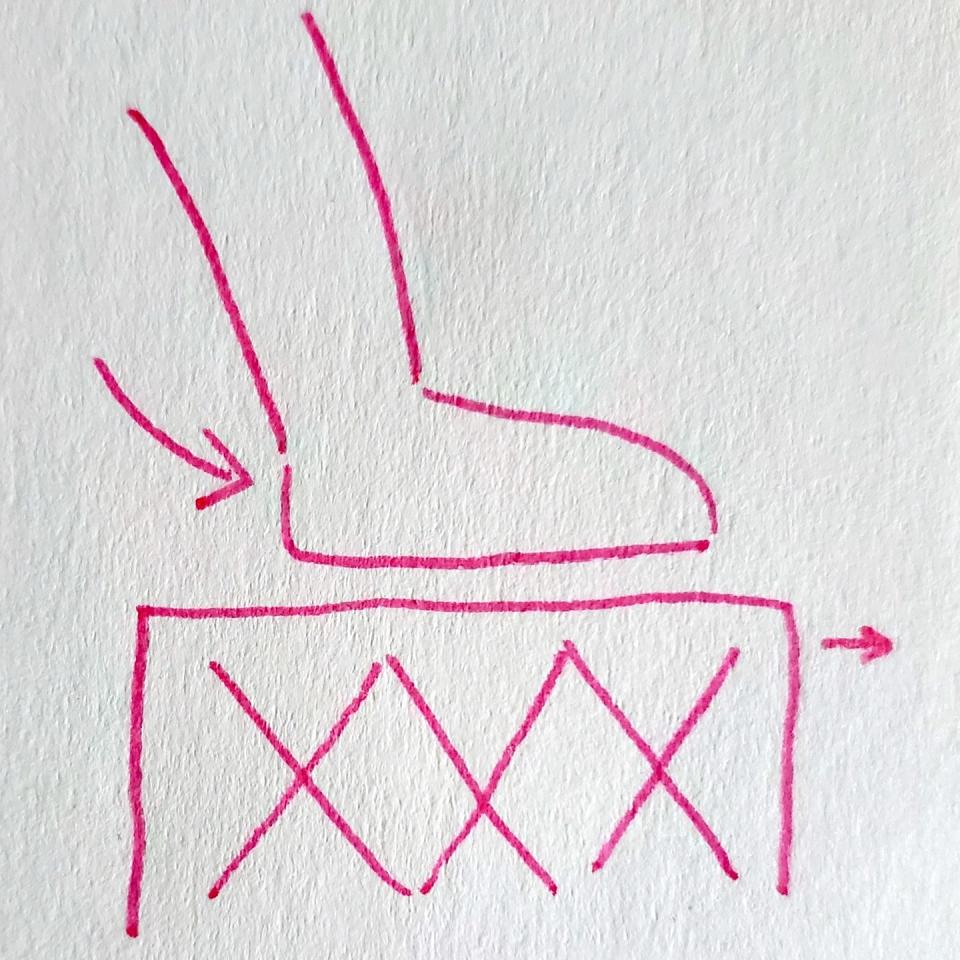People Are Maiming Themselves While Trying to Walk on Top of Stacked Milk Crates

People online are sharing videos of their attempts at the latest viral craze: the milk crate challenge.
The challenge involves stacking a series of milk crates to create a stairway, and attempting to climb up and down both sides without falling.
It turns out there are some basic rules of physics at play, and you can use them to your advantage in order to conquer the challenge.
There's always a new viral sensation online, and this week, it's something called the "milk crate challenge." What is it, and why are people falling from towering stacks of milk crates for attention? The explanation requires a little bit of speculative physics and psychology.
To complete the milk crate challenge, you need 49 milk crates—not so many for those who live near a grocery or corner store where they tend to accumulate. You stack the milk crates into a pyramid-shaped set of "stairs" that reach up to seven milk crates high at the tallest point, and then attempt to walk up and down the entire structure.
It seems easy at first glance, but as you climb, the highest levels of the pyramid quickly start to shift around, at which point the climber may panic a bit and step too fast or too off-center. Thankfully, most videos show this happening over grass, and not concrete; most of the videos end in hilarious fails that could otherwise be dangerous.
So let's zoom in on what's happening here in more detail. First of all, what's the deal with the ubiquitous containers we call milk crates? Well, that's still as simple as what it says on the tin—these are ideal containers to ship gallons (or other bottles) of milk to and from stores.
Milk Crate Challenge Going Crazy 😭😭😭😭😭😭😭😭😭😭 #MilkCrate #Challenge #Funny pic.twitter.com/wykSEeTCTU
— Yesssterday (@Yesssterday) August 19, 2021
Usually, these items are dropped off at the back alley or shipping entrance to the store, and the dairy purveyor may mean to pick them back up the following day, but forget. As a result, there are always extras hanging around, and these sturdy plastic crates have been a cornerstone of homemade furniture for decades.
There's no doubt that one milk crate is sturdy enough to stand on. You may have even used one as a stepladder to reach a high light bulb in your home in the past. This makes sense, too—a gallon of milk weighs about nine pounds, and four will fit in each milk crate, making each crate about 36 pounds when full. So, milk crates on the bottom of the milk truck must be able to support a significant amount of weight pressing down from above.
What about supporting people? We can start with the crates themselves, which stack ingeniously using a slight "lip" at the bottom that slots into the crate below. This is incredibly smart design, but the lip is really shallow. That means it works fine when the crates are either fully empty (with no one walking on top of them!) or filled with heavy milk, but the combination of slightly rounded edges on both sides means that there's quite a bit of "give" in how the milk crates fit together.

The amount of give stacks with the crates, so while two crates might not wobble much, seven crates end up with a lot of give to sway back and forth—especially when they're sitting on an uneven surface, like grass. When someone attempts to walk across the highest milk crates in the stack, they're applying weight and a directional vector to only the topmost part of the stack, which easily causes the entire row to fall over like a Jenga tower.

This is where psychology comes in, too. At first, people step gingerly onto the first few crates in the pyramid. It's easy to proceed at a slow pace, and place your foot carefully, when your other foot feels really sturdy on just one or two milk crates. But soon, the back foot starts to experience that same wobble, which usually leads the person to rush through the next few stacks.

Hurrying is the Greek tragedy of the milk crate challenge. Increasing velocity only worsens all of the factors that cause the stacks of crates to wobble and fall. While controlling movement and moving very slowly and evenly can lead to success, that requires someone to stay cool even if the stack below them starts to move. And that's just a really tough thing to ask when someone thinks they're about to plummet five or six feet to the ground.
Someone in the group chat asked why it seems harder to go down the crate stairs than up, which is also pretty simple to answer. Think about climbing up: you have one foot firmly planted, and that foot continues to hold most of your weight. You reach out with the other foot, which you plant firmly as you evenly lift your weight. It's about as sturdy as it gets.
Now, think about going down. Without the benefit of one firmly-planted foot supporting most of your body, your weight travels downward as you reach for a lower stair with your front foot. Your stable base on the way up has been replaced with one wobbling foot that isn't even fully planted on the step anymore.
So what's the best way to tackle the milk crate challenge? Stay as calm as possible and walk as slowly and methodically as you can. You can see that method in this video:
A man by the name of White Mike has set a new world record, being the 1st person to complete the Milk Crate Challenge while rolling a blunt🤯🥇 pic.twitter.com/V4RdzAWRhd
— Official Milk Crate Challenge News Source🥛 (@SirVstudios) August 21, 2021
The climber is rolling a blunt at the same time, which really illustrates how calm and steady he stays—moving the rest of his body as little as possible. To mimic his method, consider carrying a full glass of water and trying not to spill it to retain your balance.
And whatever you do, just be careful. No one wants to cry over spilled milk.
🎥 Now Watch This:
You Might Also Like

